加拿大曾经历非典的医生谈临床一线医护
51编辑注:
一名在多伦多医院工作的华人急诊护士, 在得到Mazurik 医生允许后,把她最近写的一线医护人员防护新型冠状病毒的文章翻译成中文。 她认为在国内的同行应该也可以从中受益。 希望51网能发布出去, 让更多的医护人员看见。
——————————————
2019新型冠状病毒:临床一线医护人员备忘录
作者: Laurie Mazurik,
医学博士
加拿大皇家内科医学院院士
一线急诊医生
2003年曾在非典运作中心工作

提示:随着对新型冠状病毒疾病的了解越来越多,病例数会增加,资源会减少,建议也会随之改变。这令人不安,但请相信我,您(一线医护人员)会适应并度过难关。对非典期间,我们需要了解的事情,以及分享的各种资源,我仍然记忆犹新。
这个备忘录希望对您有所帮助。
请务必与当地的感染预防和控制部门联系,并查看当地的建议,并且不要害怕提出问题。
在哪里隔离筛查阳性的患者?
首选是带卫生间的负压病房(如果有的话)。
第二最佳选择是单独使用的负压病房。
当这些类型的房间用完,唯一剩下的选择就是“组群”,或者将具有相同症状和风险的患者放在一个共享房间中。
如果您没有负压室,请记住这一点,该病毒是飞沫传播,从技术上讲,不需要空气传播的负压病房。
在我们的医院,感染预防和控制部门说,患者只要戴外科手术口罩,就可以去进行X光检查。当然,要提醒X光技术人员和运输人员佩戴适当的个人防护装备。在X射线检查后,是否需要消毒机器,我没找到一个统一的答案。大家应该向各自的感染预防和控制部门咨询。
如果患者有严重的咳嗽或需要补充02,请进行便携式胸部X光检查。
注意:
确保患者始终戴着手术口罩。
使用电话与他们交流。
当前,某些机构对被疑似患者(PUI)实行“禁止访客”政策,除非这些访客是儿童或者年老体弱者的父母/监护人或看护者。尚不清楚要给这些访客什么样的个人防护装备。感染预防和控制部门担心给他们提供未经测试的N95口罩。(在非典期间,有许多卫生保健人员佩戴没有通过检验的N95口罩。)
始终尝试向患者及其家人提供书面说明,以使他们了解隔离的含义,不要随便进出房间。
在检查轻症患者时,应该穿戴什么个人防护设备?
注意:一些教学医院正在考虑不允许学生和实习生接触这些患者,因为这会增加接触机会。这是个各单位自行讨论的问题。疫情爆发初期,这样可能还不错,但如果疾病已经在社区传播,(这样做意义不大, 因为)他们有很多机会被感染,比如购物。
目前建议的个人防护设备包括N95口罩,隔离衣,面罩和手套。
并非所有隔离衣都是一样的。有不渗透(多孔的),防水的, 和渗透的。如果患者仅有发烧,而您没有足够储备的不渗透的隔离衣,则可以使用渗透的隔离衣。
如果患者病情严重或有咳嗽咳痰,考虑穿防水或不渗透材料制成的隔离衣,并确保隔离衣能遮住您的背部。(让人惊讶的是很多人都没有遮住背部。)
在社交媒体上,您会看到中国人穿着包裹全身的防护衣,其实应该保留这些衣服,用于高风险的手术和操作(例如,插管)或长时间接触(比如,分诊护士,指定的新型冠状病毒评估和护理区域),因为供应可能有限。
面部和眼睛如何防护?
对眼睛的保护,除有手术面罩之外,还有护目镜或眼镜。选择之前请三思。要选择既能保护眼睛和遮盖面部,又起很少的镜片雾化。雾化会使您触摸脸部进行调整,这将导致严重的问题。
头套和头巾怎么样?
这些不在当前指南规定中。前线工作人员担心,在进行气管插管或雾化治疗时,不使用头套或头巾,会使头发,脸部和颈部暴露在患者的咳嗽中。您应该佩戴头套并进行喷雾细菌测试,然后再决定。(请参阅后面的资料)。
谨记:请勿在个人防护设备下佩戴任何珠宝,手表或 日常服装。
禁止将笔,图表或剪贴板带入房间。您可以决定是否要带入听诊器,但之后要用消毒纸对其进行清洁。如果有胡须,则需要刮或修剪,以免影响N95口罩的密封性。回家之前先换衣服。
在哪里脱防护装置?
如果病房有前门厅,并且隔离衣和手套不是严重污染,那么可以在前厅脱下衣服。严重污染的隔离衣和手套,可以先在病人房间,距离病人至少2 m的地方脱掉,然后在前门厅取下口罩。
如果没有前门厅,请采取以下措施:保留口罩,在病人房间(距离患者至少2 m / 6ft)脱掉其他防护设备。在患者房间外,再脱掉N95口罩。因为口罩是你与病人同处一室时,抵抗呼吸道感染的最重要防护措施。
您需要练习,才能正确地脱掉防护设备。与您的感染预防和控制部门联络,落实练习培训。也可在线查找培训视频(质量各不相同,但您可以从那里开始)。
应该避免什么操作?
要避免可以将病毒雾化到房间中的操作。
不用雾化吸入药物。如果病人哮喘,请使用肾上腺素肌注或用带吸筒的吸入器。
不用经鼻氧导管给高流量氧气
不用双向正压呼吸机
除非没有其他选择,否则请避免使用呼吸面罩挤压给氧。(如果必须使用)要2人操作,确保密封和较小的潮气量以减少雾化。(请参阅受保护 code blue )
如果病人需要吸氧,可以在鼻导管上戴上口罩。
要备高流量氧气面罩,并且可以连接到呼气过滤器上。如果你单位没有这样做,请开始检查这些装置。
如何知道来自救护车的患者是否有新型冠状病毒?
由急救车送来的病患,有两种筛查方式,一种是由调度员拨打急救电话,另一种是由急救人员(问询)。
如果他们得到肯定的答复,则提醒接收医院,让他们穿着适当的个人防护设备并准备隔离室。
我们面临的挑战是,有时候,您无法筛查(比如患者病得无法回答,语言障碍等),而疾病在社区中已传播。如果发生这种情况,急诊室员工在接待有发烧,呼吸困难,呼吸窘迫,或呼吸衰积的病人时,应该穿戴所有防护装置,并设法隔离患者,直到得到详情。如果您所在社区的人数很多,不要惊讶,您会被要求一直穿防护装置(在非典时发生过)。
在急诊室的疑似患者(没有确诊)如何处理他们?
在早期阶段,当疑似病人数量较少时, 防疫和公共卫生部门将进行测试并密切跟踪所有这些患者。如果人数增加,他们将无法测试所有疑似病人,只会对那些人院的病人进行测试(就像他们对流感所做的一样)。
急诊室员工还必须弄清楚该测试谁,以及何时测试。这是一个简单的风险分层工具。只需使用社区获得性肺炎评估工具并评估患者的临床状况即可。
新型冠状病毒如何管理 ?
借鉴社区获得性肺炎风险分级评估,来分级管理新型冠状病毒。
1,轻度风险 2, 中等风险 3, 高度风险 4, 保护控制气管插管 5, 心跳骤停抢救
轻度风险:是可以回家的病人。如果人数较少,得到公共卫生防疫部门的批准即可出院。如果病人数目增加,按照流感病人出院程序,即使没有公共卫生防疫部门的批准,病人也可出院。出院患者的姓名和联系信息应该提供给公共卫生防疫部门,以便他们进行跟踪。一个书面自我隔离指南和热线电话也要提供给出院病人,以便他们打电话咨询,以避免回访。
中等风险:按社区获得性肺炎评估打分,评分高,或者需要补充低于50%的氧气,氧分压才大于90%。这些病人应该受住入医院,或新型冠状病毒治疗机构。( 如果病人太多)
高度风险:社区获得性肺炎评估分数很高,或者需要补充高于50%的氧气,氧分压才能大于90%, 或者有呼吸衰竭, 或者有血流动力学的不稳定。 这类病人应该尽早请重症监护会诊或转入有重症监护病房的医院,进行气管插管。如果无法快速获得这些帮助,您的团队必须制定适当的流程来安全地确保呼吸道通畅。
受保护控制的气管插管:
建议对高风险患者,尽早插管,以免他们丧失呼吸暂停储备,增加对面罩给氧的需求。
如果是紧急救护车,或护理站,或是没有重症监护病房的小型社区医院,请尽早转移高风险的病人到合适的医疗场所。如果不能够转移,请执行以下操作:按常规穿戴防护装置,通过电话或视频获得气管插管的帮助。
请参阅幻灯片:“Share Protected Code Blue Principles 2020 ”
https://www.slideshare.net/LaurieMazurik/n-co-v-protected-code-blue-principles-feb-4-2020
最低个人防护装备:
N95口罩,全面罩,不渗透隔离衣,头套 和手套
注意:截至2020年2月4 日,世界卫生组织或其他机构对实施有气雾生成操置(包括插管或复苏)的个人防护装置建议中, 不包括头套或发套。但是,许多前线工作人员对此表示了担忧。我们做了一个简单的测试。一个按防护装备指南穿戴,一个除了按防护装备指南穿戴,还加盖了头套。对他们喷洒显示粉剂。没带头套的人的脸部和头发两侧都有明显的污染。带头罩的人的头及面部没有受到污染,脱装置时也没有受污染。这两组人都没有受过脱隔离装置培训。请参阅文档结尾处的“喷雾显示挑战”,自己试一试。
附加保护-安全员。这是一位“训练有素的熟悉穿脱程序的观察员”,监视团队穿脱隔离装置,对照表格打钩,以确保做得正确。当然,他们也要穿个人防护装备。
电动空气净化呼吸器 目前不建议使用电动空气净化呼吸器,你可能会发现有些场所使用它们。这些地方,通常拥有训练有素的团队,它们价格昂贵且维护困难。如果您没有此资源,请不要惊慌。只要练习所拥有的东西就行。
气管插管注意事项:
房间里只有3个人,最好的插管者,呼吸师和护师。穿戴好防护装置的支持团队在房间外。
护士要记录,并提供内部团队所需的一切。 还要有上文所提的安全员和备用插管器
如果没有多人合作,请按照通常的操作规范,穿戴个人防护装置操作。
进入病房之前,团队要聚集,讨论操作计划,分配各自角色,选好设备和药品,只带入需要的东西进病房。充电器不带入病房。除非有禁忌症,否则请麻醉病人。这样可以防止患者咳嗽,避免不必要更换防护装置。
如果可以避免的话,请不要在插管前用呼吸面罩挤压给氧。如果没有其他选择,请使用2人技术,密封并减小潮气量。
气管导管上要加过滤器。
在护理初始阶段,要保持病人在麻醉和镇静的状态。
如果您认为自己可能在此过程中被污染,请在脱下个人防护装备后,立即“暂停工作”。找一个可以淋浴的地方,淋浴。(各个医院)可能有一个指定的区域。要核实一下。
插管后,团队要总结回顾。找到那些可以改进的地方,并将这些带入整改会议,以改善流程。
气管插管面临的挑战:室内团队与外部支持团队之间的沟通?
事先解决(扬声器电话?提示扳?其他?)
心跳停止后抢救
唯一的区别是使用的药物和立即固定气道,以保护团队。您可以使用所拥有的设备来保护气道:如果您只有经过口腔气道的面罩气囊,请使用2人技术(如果可能的话),必须紧密封闭口腔和鼻腔。声门上气道装置或插管。
注意:这些原则仅是建议。
始终与您的团队合作,根据环境实施建议,不断实践以弥补不足。
需要建立进入隔离病房员工花名册吗?
需要。花名册要有员工姓名和联系信息。职工健康管理人员(感染预防和控制部门,职业健康或在医院中担任与此相关的人员)将随访所有接触过新型管状病毒患者的员工。
如果您接触了病毒,该怎么办?
每天进行自我筛查。如果您在接触后14天内出现症状,请与感染预防和控制部门(或指定的联系人)联系,以确定是否需要被体检。
在病例数少的初始阶段,您将被带到医疗现场进行评估。如果是去急诊室,请确保有人提醒他们您即将到来的时间,以便您被立即隔离。
医护人员可以将外科口罩带回家。这样,如果出现症状,就可以在接受评估时戴上它,来保护他人。
如果患病人数过多,无法一一评估,则可能会要求您在家自我隔离和自我护理。会向您提供口罩和隔离说明。
非典,新型冠状病毒,流感有什么异同?
三种流行病都是飞沫传播,都会对人体健康造成重大伤害,也都会造成卫生系统瘫痪。
非典对医疗保健提供者构成了较大的威胁。非典死亡率〜8422例确诊病例,在17个国家中有774人死亡,死亡率〜10%。新型冠状病毒的感染人数将大大增加,但目前估计的死亡率约为2%。如果遵循非典的模式,它将在4月至5月达到峰值。
非典和新型冠状病毒没有疫苗,也没有证实的有效抗病毒药。
季节性流感每年导致至少25万人死亡,但死亡率<0.1%。它具有疫苗和有效抗病毒药。
与2003年非典时不同,今天我们有社交媒体。快速的信息交流使我们能够更好地了解风险, 知道如何降低风险。今天的挑战是如何鉴别信息的准确性。
简化词汇表
(以下简略没翻译)
每个医院都有(至少)一个同等级别的医院,可以从他们那里得到帮助,以保持自身安全。
向他们寻求建议。并借鉴其他地方,别的同行的做法。
(随着疫情发展)将会出现不同的看法,建议也会随之改变。要为此做好准备。我们每个人都在努力,为了解决同一个问题。请记住,您在一线,最终承担风险的是您。要提出问题,分享主意,重视意见。您最好的防御方法就是尽可能多地学习有关知识。
请随时分享,如果您有安全的想法,很高兴看到它们。[email protected]
Resources
http://www.centerforhealthsecurity.org/newsroom/newsletters/hsh/ John Hopkins
DXY - Portal from Chinese physicians tracking realtime data on Novel CoV (in Chinese)
Centres for Disease Control (USA) page
NextStrain - Data visualizations of genetics and spread
Check your PPE using a spray of Glo Germ towards you.
作者简介
Laurie Mazurik
在加拿大Sunnybrook Health Science Centre 从事急症和重症医学25年
自2005年以来,进行约30场大规模伤亡演习,有200-700名参与者,包括致命的爆发场景
与加拿大标准协会(CSA)合作制定国家标准PPE 2007标准
2010年G20峰会的大多伦多卫生网络主管
与加拿大公共卫生局和加拿大全球事务部合作,开展CBRNE培训2011-14
CAEP代表加拿大公共卫生署参加2014年埃博拉疫情
发展国家卫生保健标准应急准备委员会主席
与Randy Wax博士等人于2003年共同开发了“Protected Code Blue”
————————————————————
附原文:
ECUUS - For Safety’s Sake
Novel CoV 2019: CHEAT SHEETS FOR FRONTLINE HEALTH CARE PROVIDERS
By Laurie Mazurik, MD FRCPC, Frontline Emergency Physician
A former 2003 SARS Operation Centre MD. Updated Feb 4, 2020
NOTE: As more is learned about a disease, the case number rises and resources diminish the recommendations will change. It is unsettling but trust me you will adapt and get through. I am just vividly remembering the things we needed to know during SARS and sharing material from multiple current resources. I hope it helps. Always check with your local Infection Protection and Control to see their recommendations and never be afraid to ask questions.
Where do you ISOLATE patients who have a positive screen?
The first choice is a negative pressure room with a bathroom, if you have one.
The next best option is negative pressure alone, followed by a single room.
When you run out of these types of room your only remaining option is “cohorting”, or putting patients with the same symptoms and risk in a shared room.
If you don’t have negative pressure rooms, keep this in mind, this virus is droplet spread and technically doesn’t require airborne or negative pressure rooms.
At our hospital, IPAC says the patient can GO TO XRAY as long as they wear a surgical mask. Remind the Tech and the Transport Team to wear the proper PPE. I have found varying recommendations about whether radiology needs to clean the machine after an x-ray. They should check with your IPAC.
IF you have a sick patient who has a significant productive cough or needs supplemental 02 do a portable chest x-ray.
NOTE: Make sure patients keep their surgical mask on at all times. Use phones to communicate with them. Currently some facilities have a NO VISITOR policy for Patients Under Investigation (PUIs) except if they are the parent/caregiver of a child or frail elder or compassionate reasons.
It is unclear what PPE to give the person staying with the patient. IPC is concerned about giving them an N95 that has not been fit tested. (During SARs many HCW did not wear fit tested N95.)
ALWAYS try to give the patient and their family written instructions about this so they understand what isolation means and don’t wander in and out of a room.
WHAT PPE (Personal Protection Equipment) should you wear when assessing the relatively well patient?
NOTE: Some Teaching Hospitals, are considering not allowing learners and residents see these patients and it doubles the exposure. It’s a local discussion you should have. Early in an outbreak that might be fine, but if there is spread in the community, they are just as likely to get it shopping.
The current recommendation is an N95, gown, face shield and gloves.
NOT ALL GOWNS ARE EQUAL.
There are non impervious (porous), fluid resistant and impervious. If a patient has only a fever, and you potentially may have run into a gown shortage, non-impervious may be acceptable.
IF the patient appears very ill or has a productive cough
CONSIDER wearing gown made of fluid resistant or impervious material and make sure the gown covers your back. (You’ll be surprised how many don’t).
On Social media you will see the Chinese are wearing body suits, but you should reserve these for high risk patient procedures (e.g. intubation) or prolonged exposure (triage,designated nCoV assessment and care areas) , as the supplies may be limited.
FACE and EYE Protection:
You may find recommendations for eye protection in the form of goggles or glasses instead of OR in addition to a face shield. THINK before you choose. You want eye protection, facial coverage and minimal fogging. Fogging leads to significant problems as you will touch your face to adjust things.
What about Hair cover and or hood?
These not in the current guidelines but front line staff who are expected to do intubation or aerosol generating procedures have expressed concerns that not having these leaves hair, sides of face and neck exposed to a patient’s cough. You should obtain a hood and do a spray germ test and then decide. (See resources at end).
REMEMBER: NO jewelry, watches, or street clothes under PPE.
No pens, charts or clipboards should go into the room. You can decide if you want to take your stethoscope in but clean it with a CAVI Wipe afterwards. IF you have a beard or mustache you need to shave or trim it so it does not break the N95 respirator’s seal.
Change your clothes before you go home.
Where do you DOFF PPE?
IF you have a room with an anteroom, you doff in the ante-room UNLESS your gown or gloves are heavily soiled. Remove heavily soiled gowns or gloves in the patient’s room standing at least 2 m from them. THEN TAKE your mask off in the anteroom.
If you don't have an ante room: TAKE everything EXCEPT your N95 off in the room (at least 2 m/ 6ft from the patient). Take your N95 off outside the patient's room as it is your most important defence against respiratory infection when you are exposed to the patient.
You need to practice doffing to do it properly. Reach out to your IPAC to set that up and look online to find a training video (the quality varies, but you can start there).
WHAT PROCEDURES SHOULD YOU AVOID?
Anything that can aerosolize the virus into the room.
No nebulized medications. IF they are wheezing use Epi IM and regular metered dose inhalers.
No High Flow 02 Nasal Prongs
No BiPAP
Avoid BVM unless there are no other options. Use 2 person technique to insure seal and small tidal volumes to reduce aerosolization. (see Protected Code Blue)
If they need supplemental 02 you can put a surgical mask over nasal cannula.
HiOx masks should be available and can be attached to an exhalation filter .
Start looking at these options at your site if you haven’t already.
How do you know if a patient coming in from EMS has n-CoV?
Patients coming by EMS are screened two ways, once by the dispatcher taking the 911 call and then by the medics.
If they get a Positive they are to warn the receiving hospital, triggering them to wear appropriate PPE and prepare an isolation room.
The challenge comes IF you are unable to screen (patient too ill to answer, language barrier, etc.), and the disease is spread in the community. IF this happens, ED Staff should wear the n CoV PPE for all undifferentiated ill patients with any of the following fever, SOB, pre-arrest or arrest and try to isolate the patient until more is learned. If numbers are high in your community don’t be surprised if you will be asked to wear PPE at all times (this happened in SARS).
Patients Under Investigation in your ED. What do you do with them?
In the early stages, when there are low numbers, IPC and Public Health will do testing and closely track all of these patients. If numbers go high, they will not be able to keep up with testing and will only test those who are admitted.(Much like they do for influenza.)
ED Staff will also have to figure out who to refer to and when. Here is a simple risk stratification tool. Just apply the CAP (community acquired pneumonia) tool of your choice and assess the clinical condition of the patient.
Low Risk : Well patients who can go home.When numbers are low this will be done with the approval of IP&C and Public Health. If numbers get high, you will likely have a process put in place to d/c without IPC/PH approval just like you would do for influenza now. IPC/PH will likely want to know patients name and contact information so they can track them. You should also have written instructions for patients about how to self-isolate and a telephone hotline they can call for advice to avoid a return visit.
Intermediate Risk: High CAP Score or Supplemental 02< 50% needed to keep 02 sats>90.
Admit to Hospital or n Co V treatment site (if number are high).
High Risk: High CAP Score or Fi02> 50 % needed to keep sats >90% OR signs of respiratory fatigue or hemodynamic instability. EARLY Refer to ICU or transfer to a hospital with ICU capacity to perform controlled intubation. If this is not rapidly available, your team must have a process in place to manage this patient and perform airway management safely.
PROTECTED Controlled Intubation
EARLY intubation in high risk patients is recommended before they lose apneic reserve and the need for BVM as part of pre-oxygenation rises.
If you are EMS or in a nursing station or small community hospital without an ICU, transfer early to a site that can manage these patients. IF this is not possible: do what you normal do in PPE and phone or video consult for support.
See Slide Share Protected Code Blue Principles 2020 :
https://www.slideshare.net/LaurieMazurik/n-co-v-protected-code-blue-principles-feb-4-2020
Minimum PPE:
N95, full face shield, impervious gown and * hood, gloves
NOTE:: As of February 4, 2020, hoods or even hair covers are not part of the current WHO ( and others) PPE recommendation for aerosol generating procedures including intubation or resuscitation. However concerns have been expressed by many frontline staff about this. We did a simple test of spraying glo germ at someone in current PPE Guidelines and someone with a hood added. The person WITHOUT a hood has significant contamination to the sides of their face and hair. The one WITH the hood had virtual no contamination to their head and did not contaminate themselves doffing. Neither was coached while doffing. See spray Germ Challenge at end of document, and try this yourself.
Additional Protection: A Safety Officer . This is a “Trained Observer” familiar with the process that observes your team don and doff (using a checklist), to make sure you do it properly. They also wear PPE.
PAPRs (Powered-Air Purifying Respirators) are not currently recommended but you may find sites using them. These usually have trained teams using them are expensive and a challenge to maintain. Don’t be alarmed if you don’t have this resource. Get practicing with what you have.
TIPS:
ONLY 3 PEOPLE IN THE ROOM.
The best intubator, RT and RN.
A SUPPORT TEAM OUTSIDE THE ROOM
All wear PPE.
Nurse to chart and get whatever the team inside needs.
Safety Officer
Alternate Intubator
IF YOU DON’T HAVE THiS MANY PEOPLE : Do what you normally do- IN PPE.
HAVE A TEAM HUDDLE TO DISCUSS YOUR PLAN BEFORE YOUR ENTER
Assign and discuss roles; choose equipment and drugs and only take in what you need .
NO CHARTING IN THE ROOM.
ALWAYS PARALYZE unless there is a contraindication.
This stops the patient coughing of the virus towards you and/or displacing your PPE.
DON'T BAG BEFORE YOU INTUBATE if you can avoid it.
IF there are no other options, use 2-person technique to a tight seal and small tidal volumes.
A FILTER GOES ON THE ETT.
KEEP Patient paralyzed and sedated after intubation in initial stages of care.
IF YOU THINK YOU MAY HAVE BEEN CONTAMINATED during this procedure take a "work pause" once you doff your PPE. Find a place to shower and change your greens. There may be a designated area for this. Check.
ALWAYS DO A TEAM DEBRIEF AFTER THIS.
You will identify things you can do better and bring those ideas forward into sim sessions where you improve the process.
CHALLENGES: Communication between the team in the room and the support team outside.
Work that out in advance (speaker phone? White board? Other)
Protected Code Blue
The only differences are the drugs you use and secure the airway immediately to protect the team along. You secure the airway with the equipment you have: if you only have a BVM: oral airway, 2 person technique (If possible) a tight seal is essential; supraglottic airway device or intubation.
NOTE: THESE PRINCIPLES ARE SUGGESTIONS ONLY.
ALWAYS work with your team to adapt ideas to fit your setting and practice them to fix gaps.
STAFF ENTRY LOG for Patients who are Isolated
Record staff name and contact information on Staff Entry Log
Employee Health Management (IPAC, Occupational Health or whoever has this role at your hospital) will follow up with all staff who have contact with confirmed 2019-nCoV.
IF YOU HAVE BEEN EXPOSED WHAT DO YOU DO?
Self screen daily. If you develop symptoms within 14 days of your exposure contact your IPAC (or a designated contact) and determine if you should be assessed.
In the initial stages where the number of cases is low, you will be directed to a medical site for assessment. If this is the ED make sure someone alerts them to the time you are coming so you will be immediately isolated.
It is probably reasonable for a HCW to take a surgical mask home with them, so that if you develop symptoms you can protect others by wearing it when you come in to be assessed.
IF THE NUMBER OF CASES gets too high for you to be assessed you may be asked to self-Isolate and do self-care at home. Masks plus instructions should be provided to you.
SARS compared to Novel CoV 2019 compared with influenza:
All can cause significant harm to people. All can paralyze the health system.
SARS posed a greater threat to health care providers. SARS Mortality ~8422 Confirmed Cases, 774 Deaths in 17 countries, Mortality ~10% . 2019 nCoV will have far greater numbers infected but the current estimated death rate is ~ 2%. If it follows a SARS pattern, it will peak April-May .
SARs and 2019-nCoV do NOT have a vaccine and no antivirals have been shown to work.
Seasonal Influenza kills AT LEAST 250,000 people per year but has a mortality of < 0.1 %. It has a vaccine and antiviral.
ALL are droplet spread.
The difference between SARS in 2003 TODAY and today is social media. The rapid exchange of information that allows us to understand the risks better and how to reduce them. The challenge is knowing what is correct.
Simplified Glossary.
Screening Tool: The questions you ask to determine if a patient could have been in contact with someone who was infectious. The geographic questions change as the transmission pattern changes.
Isolation: The process of separating an ill patient from well patients. For this virus the first choice is a negative pressure room with a bathroom, so they don’t have to walk around. ALWAYS have them wear a surgical mask. As your room availability decreases go to negative pressure (no bathroom), then single room, then finally cohort where patients with the SAME illness share a room.
Quarantine: Isolation and quarantine always get mixed up. Quarantine is the separation or isolation of WELL people exposed to the virus, for a period of time until you are sure they do not develop the illness. Mass quarantine seldom works because of poor compliance and difficulty in enforcing it. During SARS thousands of health care workers were on work quarantine. If they had stayed home, there would have been no one to provide care! They worked, went home, self-isolated at home and self-screen before coming to work. This was stressful but everyone adapted because the circumstances dictated it.
Personal Protection Equipment (PPE):
Not all PPE is equal. You are the one making patient contact and taking on the risk, so please to learn what PPE to use when, and how to don/doff it. Don’t be surprised if opinions differ. Become knowledgeable and make your own informed decision.
Hand Hygiene is probably the most important generic protection, so it is a given, you know how to do that correctly. A description of respiratory and body protection follows.
Simulated Workplace Protection Factors (SWPF):
This is a measure of a piece of PPE’s ability to protect you in your workplace. This means it’s been tested in a simulated workplace. Whose work place is the question you won’t easily find an answer to. It is usually industrial exposure to dust and gases and based on particle size.
Surgical or Procedure Mask: SWPF 2
This was never designed to protect you. It was designed to protect the patient FROM you. This is why we put them on patients with respiratory infections. It reduces the spray of the virus into the room.
N95: SWPF 10 to 100. This must be fit tested.
This provides protection from airborne viruses (<3 microns in size).
Air Purifying Respirator (Gas mask):100-1000.
Used mainly for protection from toxic gases, so easily provides airborne protection.They are hot, fog easily and you won’t be able to wear them if you are claustrophobic.
Powered Air Purifying Respirator (PAPR): SWPF 10000+
This is the most expensive, and technical piece of PPE you may have available to use: PROS: Great protection, does NOT fog, is cool and you can wear it for hours. CONS: Most places don’t have these, steeper learning curve, expensive, greater maintenance and you should have a Safety Officer or Trained Observer watching the team don and doff.
Gowns: NOT all gowns are equal:
If a patient is “wet” e.g. has a lot of secretions, heavy cough etc. use an impervious gown.
Face Protection: FACE SHIELDS are recommended by most IPAC (Infection Prevention and Control) for Novel CoV. Make sure the fit is snug, because they are easy to displace.
You may also find some sites recommending glasses or goggles alone or in combination with a face shield. CHOOSE CAREFULLY. The combination fogs and you will be touching your face to adjust them. Goggles and glasses have less facial protection.
Head Protection: Use if patient has a productive cough. Check what your hospital has to cover your head. Impervious or fluid resistant is better.
Head and Neck Protection: If you are doing a high risk procedure that will generate aerosols in the room e.g. intubation, wear a Hood the is either impervious or rated agained airborne organisms. Sites with PAPRs may choose to use them, but the current recommendations do not state this is needed. Add a Safety Officer (or Trained Observer) for this and consider training high risk procedure teams.
Infection Prevention and Control Team.
Every hospital has one (or an equivalent) and they are there to help you stay safe.
Reach out to them for advice. Check what others are doing elsewhere and become informed.
Different opinions will arise and recommendations change. Be prepared for that. It’s just everybody working on the same problem. Remember you are on the frontlines, and the ultimate risk taken is yours. Ask questions, share your ideas and value your opinion. Your best defence is learning as much as you can about this.
Laurie Mazurik MD FRCPC, Emergency Physician, Toronto
Please feel free to share and if you have ideas to stay safe it would be great to see them. [email protected]
A N-CoV Staying Safe in the ED power point is also available on Slide Share: https://www.slideshare.net/secret/bKp6kzdUnFAUhJ
Applying Protected Code Blue Principles to nCo V Patients
https://www.slideshare.net/LaurieMazurik/n-co-v-protected-code-blue-principles-feb-4-2020
Resources
http://www.centerforhealthsecurity.org/newsroom/newsletters/hsh/ John Hopkins
DXY - Portal from Chinese physicians tracking realtime data on Novel CoV (in Chinese)
Centres for Disease Control (USA) page
NextStrain - Data visualizations of genetics and spread
Check your PPE using a spray of Glo Germ towards you.






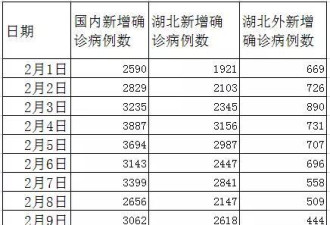
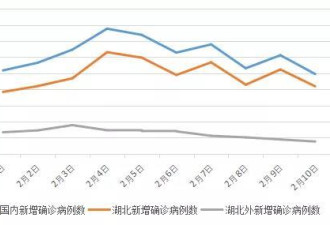
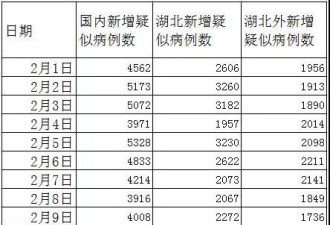
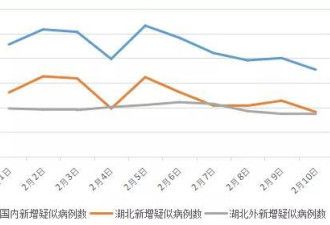






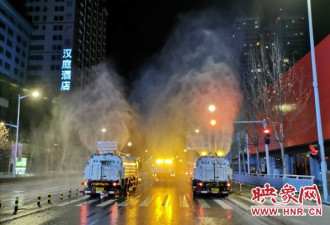
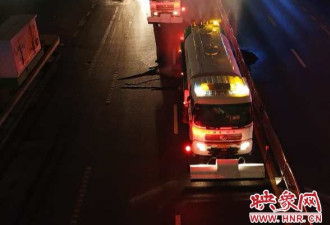
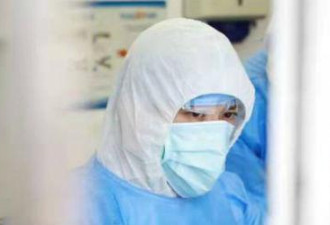
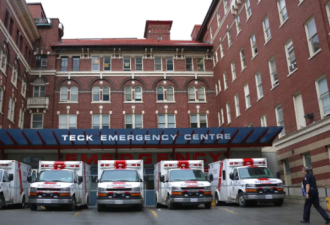


网友评论